Horror moment ambos realised boy, 6, was planning suicide
A broken little boy who’d lost his dad to suicide and his mum to drugs had all but given up hope that there was anyone left who cared. Thankfully, help was about to arrive.
QLD News
Don't miss out on the headlines from QLD News. Followed categories will be added to My News.
In a moonlit park in Stafford, in Brisbane’s north, a wisp of a boy is swinging on monkey bars and thinking of how to kill himself. He is six.
Abused by his dad and sent to live with his grandmother because his mum is an ice-addict, Jake is extremely agitated and has run away, again.
His Nan, who can’t cope with her grandson’s violent behaviour and fears his threats of suicide are real, calls triple-0.
Suicide is how Jake’s father died recently, and Jake was the one to find him.
What this broken little boy doesn’t know, as he swings and thinks, is that help is on its way.
Paramedics specialising in mental health will soon be with him.
And on this night, they will save him.
TWO TEEN SUICIDES, ONE SCHOOL, SEVEN WEEKS APART
YOUTH SUICIDE ‘EPIDEMIC’ A ‘NATIONAL CRISIS’
SCHOOL STUDENT SUICIDE AMPLIFIES VULNERABILITY OF OTHER TEENS
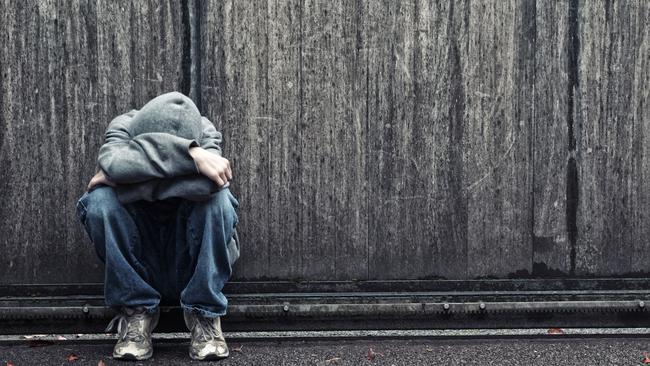
Jake is one of many children in a rapidly rising sea of Queenslanders needing critical face-to-face intervention to treat demons within.
Some are victims of prolonged distress, others of more immediate circumstance, including personal and financial hardships either caused or exacerbated by COVID-19.
But all are resulting in frantic calls to triple-0 as mental health outstrips chest pain and trauma as the greatest reason for emergency assistance, after falls.
The dramatic increase – of 20 per cent since last year and climbing – has prompted an urgent, targeted response from the Queensland Ambulance Service and, after a successful pilot, a permanent program has been funded this financial year.
Costing millions, the program is two-fold.
In the busy Brisbane operations centre at Kedron where triple-0 calls are received and ambulance crews assigned and monitored, there are now mental health clinicians, typically nurses, manning the phones.
They’re giving on-the-job advice to the state’s 4500 paramedics, including how to de-escalate high emotions and reduce risk, and relaying a patient’s mental health history, if available.
Meanwhile, on the road, senior mental health nurses and paramedics are travelling in “co-responder” teams of two, delivering near-immediate intervention, often eliminating the need for police presence or long waits in chaotic hospital emergency departments.
It’s first response with maximum impact.
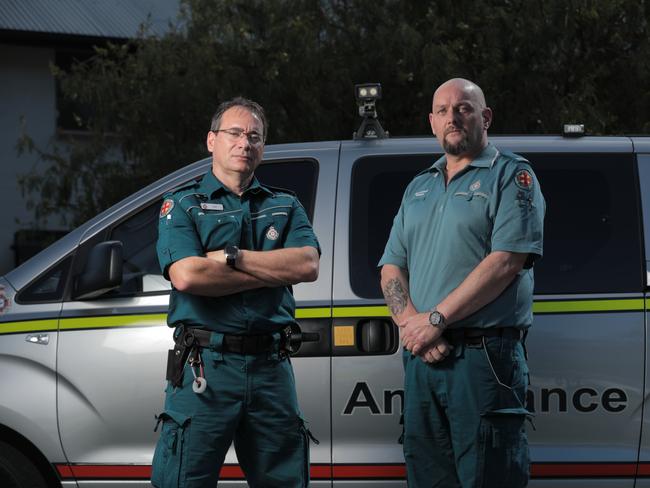
Veteran paramedic Rob Azzopardi likens it to strengthening the frontline in a war.
“Phone services like Lifeline and Beyond Blue can only do so much, and as soon as someone says they are suicidal, they send them to us anyway, and we can be there in minutes,” Mr Azzopardi says.
“If you’re going to go to war you need to have the strongest frontline possible, and it’s a war out there.
“The crisis is growing, and we need people with medical training on the frontline,” he says.
“We’re supposed to be the lucky country, but so many people are struggling and COVID has made it worse.
“People are not allowed to do anything; they’re stuck in their communities, their homes, they don’t have any money, any food, they’re starved for affection, and they’re putting their hands up and saying, ‘someone help me’.”
The 51-year-old father of five, based in Queensland’s busiest station of Beenleigh, says while he sees children like Jake everywhere – “same problems, different locations” – mental ill-health affects people of all ages and is rarely clear cut.
In the bayside suburb of Wynnum, an elderly man was being beaten by his wife. Both were in their 80s.
A check of the wife’s medications revealed her violence was due to withdrawal after she stopped taking opioids to treat chronic arthritis.
“A QPS (police) responder would look at that scene differently, but we look at it holistically,” Mr Azzopardi says.
“We’re doing emergency department assessments in the home environment, and being in a person’s private space can shed light on what’s actually going on.”
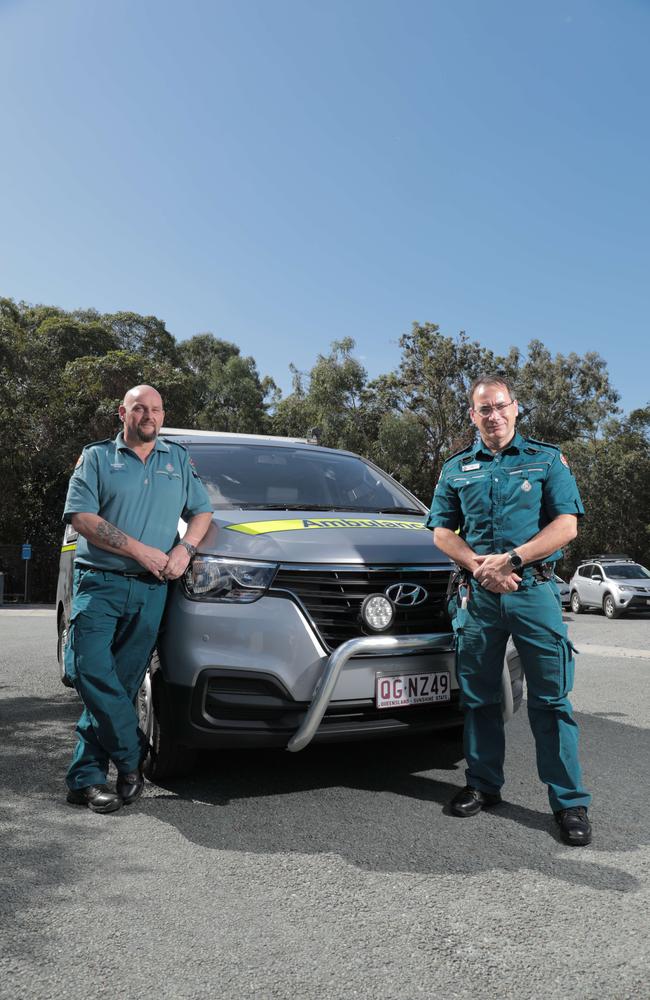
Increasingly, poverty is driving suicidal behaviour and aggression.
“There’s a saying: when people don’t have anything and they have nothing to lose, they lose it,” Mr Azzopardi says.
“We go to people who have no food in the house, and they’re threatening to kill themselves because they are frustrated and hungry, and they want us to take them to hospital so they can (be admitted and) get a meal.
“Others who are vulnerable try to look for an escape, and then ice is introduced, and that’s so difficult to deal with. They’re unpredictable and can turn on us, like that.
“We don’t do violent cases where weapons are involved, but it can still be frightening.”
Mr Azzopardi says wearing the teal QAS uniform opens doors, literally, as people in emotional crisis are more receptive to paramedics than police, but that doesn’t mean they’ll be upfront with the truth.
A 20-year-old man, reported to be suicidal after breaking up with his girlfriend, appeared perfectly calm when Mr Azzopardi and his partner responded “with lights and sirens”.
“When we got there, the boy’s talking just like us, and he’s invited us inside and, really, you’d think, low threat.
“But as paramedics we are taught to think broadly and investigate, so as he and I sat in the lounge room discussing his problem with his ex-girlfriend, my partner walked off down the hallway.
“He came back and said, ‘Rob, you better look at this’, and in another room there were lit candles on the floor and a photo of the man’s child, and evidence he was about to suicide.
“This is where the phone would have lost this boy. Without face-to-face, you can’t get the scene findings, and nothing beats a hand on a shoulder saying, ‘let’s work through this together’.”
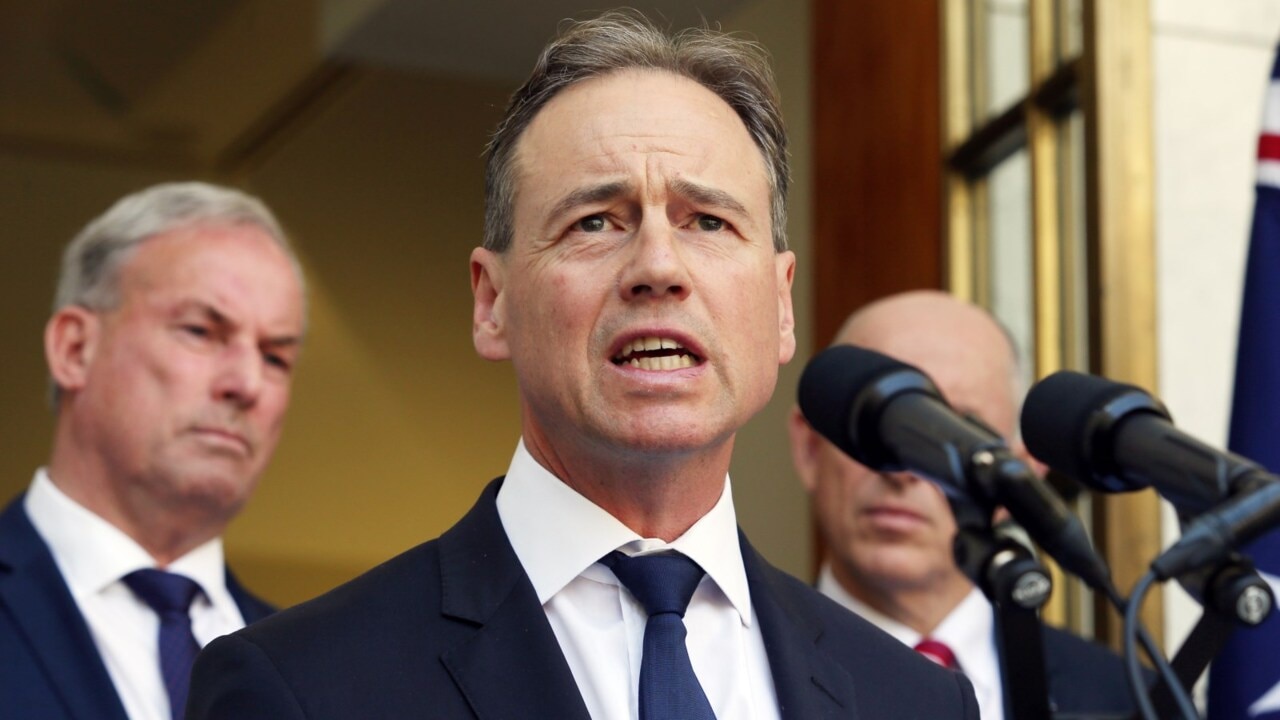
Mr Azzopardi admits not everyone can be saved but for every life lost, he estimates he and his small team have saved a dozen others.
From that first intervention and clinical assessment, co-responders decide whether to deliver short-term management themselves or develop treatment plans with other services in and outside the public health system.
“It’s really rewarding work,” Mr Azzopardi says, “but when we get a negative outcome, the next of kin crying just eats you up.
“I’m very lucky though, because I have these guys, who are like full-time tutors when it comes to my own wellbeing.”
These guys are Paul Meehan and Paul Bedward, mental health nurses with years of experience in large hospitals.
They work for Queensland Health but are assigned to the QAS Metro South unit, in Beenleigh, under the new collaborative program.

“Peer support is so important, to talk things through,” says Mr Meehan, 52, who moved to Australia in 2000 from Birmingham in the UK.
“As a father of two young children, it can be tough. Working in the Logan area, I see how disadvantaged some children are, in dysfunctional homes, and we do our bit to de-escalate and calm things down, to reassure, to offer support and a bit of education to the parents, to manage that situation better.
“Often I come away feeling for those children, knowing their choices going forward are limited, and I’ll get home and give my kids a cuddle and think, you don’t know how lucky you are.”
Mr Bedward, 53 and also a father of two, says the hardest part is trying to help people who don’t want to accept help.
“When someone has everything going against them, and they’re justified being in the place they’re in, you can spend so much time explaining, exploring, using different questioning techniques and cognitive reasoning skills … but if they pull the shutters down and say, ‘I don’t suffer from mental ill-health’, that gets to me because I know they’re in for a rough time.
“That said, I rarely take work home with me,” says Mr Bedward, originally from Liverpool in the UK.
“When I came to Australia I worked with a great psychiatrist whose advice was ‘if you go home with doubts, you haven’t done your job right’, so I keep that as my mantra and do everything I can to ensure that individual gets the very best care.”
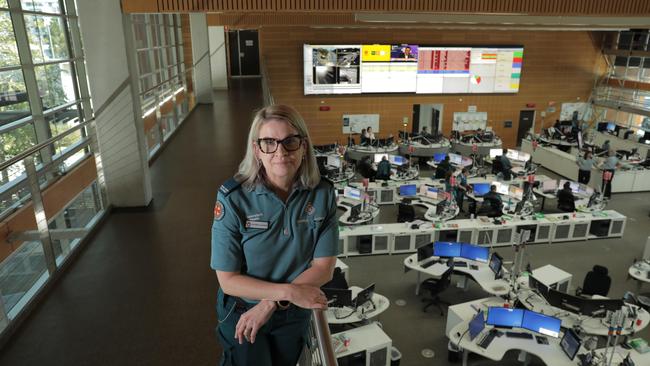
Back at Kedron headquarters – where 60,000 mental health related calls are now received annually – QAS medical director Dr Steve Rashford describes the multimillion-dollar response program as “a game changer”.
Developed and directed by psychologist Sandra Garner, who joined the QAS last year, it is not only freeing up police resources but also slashing the 11-hour average emergency department wait time for mental health patients.
“Mental illness is not a criminal issue, it’s a health issue,” Dr Rashford says.
“There is that stigma of police cars turning up outside your house, and no one wants that, and the police don’t want it either.
“The majority of people with mental illness are not violent, and if your sister or brother were suffering, the last place you’d want them to be is in a police car.
“You also don’t want them in an emergency ward where their fears can be heightened, with lots of bright lights, noises and stimulation, and no one seeing them for hours and hours.”
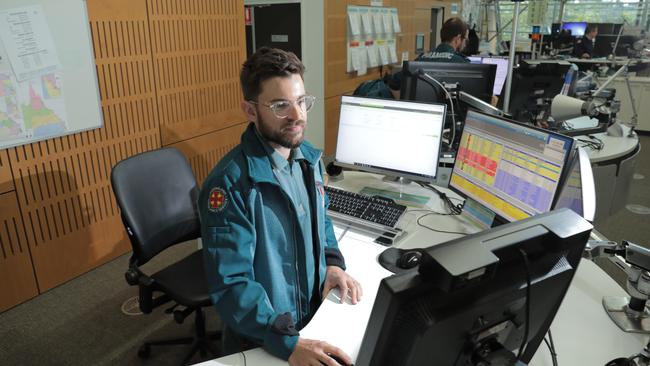
Dr Rashford says co-responder teams typically assess people in under two hours (including travelling time) and often people are just having “an aberration of their normal human emotions which, if unchecked, can progress”.
“And that’s the key – reassurance, support and working hand-in-glove with our police colleagues and mental health services – and it’s really showing positive outcomes.”
Despite their best efforts, Dr Rashford predicts calls for mental health will equal calls for falls “within a number of years”.
Those on the frontline agree.
While Metro South has received government funding, along with the two other pilot sites of Gold Coast and West Moreton, paramedic Rob Azzopardi says more needs to be done.
Currently, there is only one co-responder crew operating daily in each site.
“We can only treat one patient at a time, whether they’re six years old or 86,” he says, “but this war is escalating and the frontline needs to be adequately resourced because that’s where we are going to get the results.”

